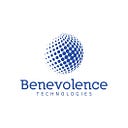Top 5 Considerations for Cloud-Based ECM (part-1)
Moving enterprise content management to the cloud comes with impressive business benefits — operating costs are reduced, capital investment is dramatically reduced, the processing speed is increased, and governance becomes much easier. These are important results for a business, but — and this may surprise you — we recommend caution before rushing into a project.
Instead, we advocate a more perceptive approach. This is something you can review in detail in our White Paper, but if you want to get to the right point, here is a five-minute read on what we think is for organizations before climbing the cloud. What are the key points for understanding and planning? ECM based transfer
1. Content — Where what and why
Even if you are not currently planning to migrate, gaining control of the information in your enterprise is a worthwhile exercise. Given security, good governance, and financial responsibility, we strongly recommend documenting:
Where your content is stored: Are you organizing your content into a single repository? Do you manage information in your business applications? How will your employees know where to find information?
What type and size of content do you have: Are you saving scanned photos or Office and PDF documents? Does your content include rich media such as images, audio, and video files? Any other proprietary formats, including graphics or CAD file formats?
Why you’re holding it: Is it to simplify business decisions or processes (are your employees able to find / access information when needed, and is it available in relevant business applications?), Provide access (do your employees know where to look? And how to find documents?), Or to ensure proper governance (do you apply retention or record reservations? )?
The beauty of this exercise is that you can discover the content that you no longer need, display the content that should be more accessible or in a different place, and identify those costs. You can avoid them.
2. Be careful with storage
Cloud storage costs vary greatly depending on the content security and compliance requirements and the frequency with which you will access it. Once you’ve determined the features and requirements of your content, you can decide which repository is most meaningful — and you don’t have to choose just one.
You may have content that needs to be kept, but it may remain inactive, as well as content that needs to be highly available. Keeping your overall storage needs in mind gives you the keys to building an intelligent, multi-tiered storage architecture.
3. Determine your database
In most cases, database migration requires exporting from an on-premises environment and later importing into a new environment, which can be cloud-based on-premises or hybrid configuration. Before migrating, make a plan that starts with understanding:
Database type and vendor
Storage size
Requirements for a variety of materials
Cloud or on-premises
Security and regulatory requirements
Export and import times
A rollback plan
Cutover and Delta
4. Strict security
Ensuring that your highly sensitive systems and information are well-protected is fundamental to any cloud-based business solution. In deciding who can access the documents, you need to determine who can access the cloud environment, applications, ports, and more. At the very least, you should specify:
Security groups:
Who they are and what access is needed.
Who can do SSH in the machine?
Who can access using HTTP and HTTPS?
Which inbound and outbound ports are required.
5. Be careful with the layout of the content.
When planning the layout of the content needed to import your existing content into the new cloud environment, we recommend that you understand and take into account the following requirements:
Content model, including metadata requirements
Data protection standards, including the date of creation and modification
• Organizational folder structure
• Specific requirements for security, including folders, subfolders, and content types
Versions, including definitions of large and minor versions
Renditions, including automatic generation requirements
Interpretations, including within user creation tools or content management solutions.
